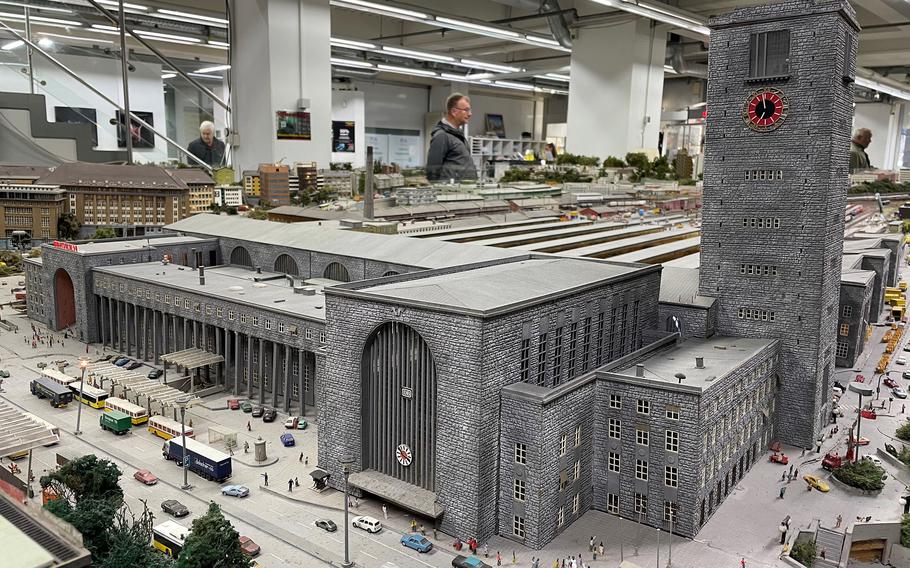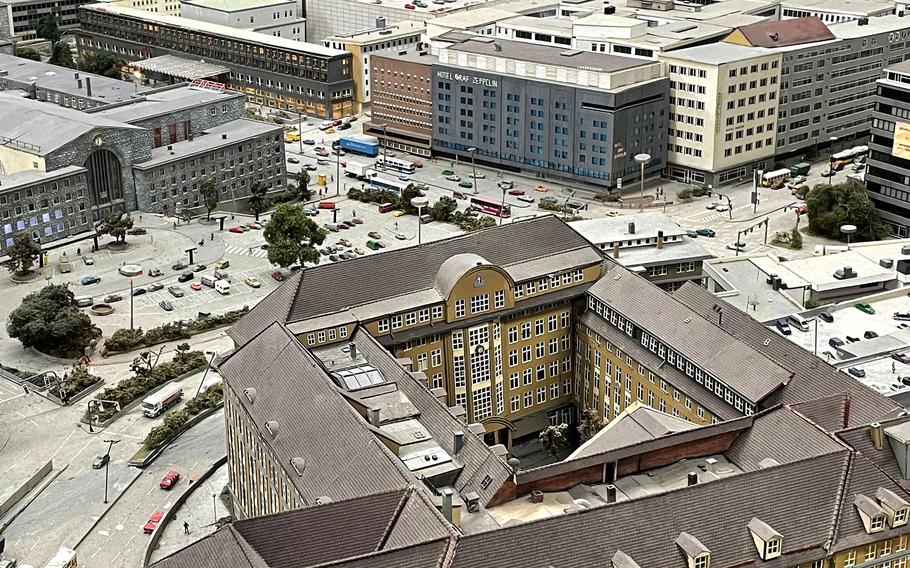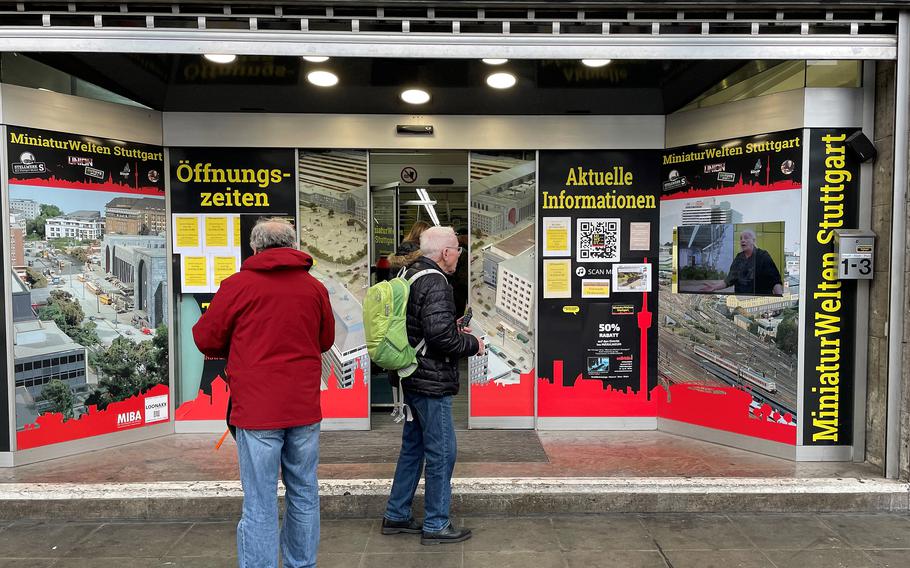
The Stuttgart main station, with its iconic Mercedes Benz symbol atop it, is the primary feature of the Miniature World Stuttgart museum's collection of models re-creating the 1980s look of the German city. (John Vandiver/Stars and Stripes)
In the model train world, the replica of Stuttgart’s main railway station housed in a museum on the opposite side of Arnulf Klett Platz is apparently something of a big deal.
Hobbyists are said to have talked about it for years before the 2017 opening of Miniature World Stuttgart, with pictures of the model’s development appearing in trade magazines decades ago.
The museum was a product of some 30 years of work by its creator, Wolfgang Frey. Before its arrival on the Stuttgart scene, the much-ballyhooed model of the station and its environs had been hidden from the public.
Besides the station, the miniature involves about 500 model buildings and is touted by museum organizers as the largest city model in all of Europe. The true-to-scale reproduction of Stuttgart in the 1980s was made from recycled materials.

A model at Miniature World Stuttgart depicts the German city as it was in the 1980s, but many of the buildings still look the same today, including the Steinberger Hotel across from the main railway station. The model of the train station and its surroundings is the biggest one in the museum's collection. (John Vandiver/Stars and Stripes)
I visited recently and asked a staff member where Frey is now. I was told he died in his early 50s of unknown causes some years before the museum opened.
On arrival, I was a little taken aback at the 9 euro entrance fee, which seemed steep for a relatively short visit to such a quirky place.
But that obviously hadn’t deterred the numerous other visitors, who seemed to take a deep interest, looking closely at the trains, tracks and models.
The rendering of the Stuttgart train station serves as the centerpiece for the model, designed as a replication of what that area looked like decades ago.
Currently, the facade of the station is about all that remains of a building that has been mostly gutted in connection with the ongoing Stuttgart 21 project, one of the largest and most controversial German public works initiatives in years.
But having been around Stuttgart since before construction got underway years ago, I looked at the replica of the transportation hub as it was before, and it felt like time travel.
The experience reminded me of the small thrill you get when seeing some familiar street corner on television or in a movie.
For anyone who has spent time wandering around Stuttgart, it all still looks incredibly familiar thanks to the exquisite detail of the replica.
Cars, buses, trucks and trains course around the model city. The bustling B-27 and buildings surrounding the main station, such as the Steigenberger Hotel, are also picture-perfect.
I enjoyed the re-creation of Königsstrasse, the main pedestrian commercial strip, which extends about a mile and offers an iconic view of the Mercedes Benz symbol atop the main station at one end.
The model also captures the large swaths of green space that make the Stuttgart metro area distinctive. The area along the Neckar River, with cruise boats in the water and the Rosensteinschloss up on a lush green hill, also looks just right.
I regretted making a solo trip to the museum because it’s definitely something for school-age kids to enjoy. I suspect the museum’s models, all handcrafted, would be of interest to any youngster into things like trains or Legos.
It seems like the kind of place that attracts aficionados. I’m hardly one of those, but I enjoyed the experience nonetheless.
And I left thinking that the craftmanship and all those years of dedication that went into the realization of Frey’s dream made it worth the price of admission.

Miniature World Stuttgart is a museum across the street from the city’s main station that features a large true-to-scale replica of downtown Stuttgart in the 1980s. (John Vandiver/Stars and Stripes)
On the QT
Address: Arnulf-Klett Platz 1-3, Stuttgart, Germany
Hours: Thursday-Sunday, 1-5 p.m.
Cost: adults, 9 euros; children, 5 euros
Info: Online: miniaturweltenstuttgart.de